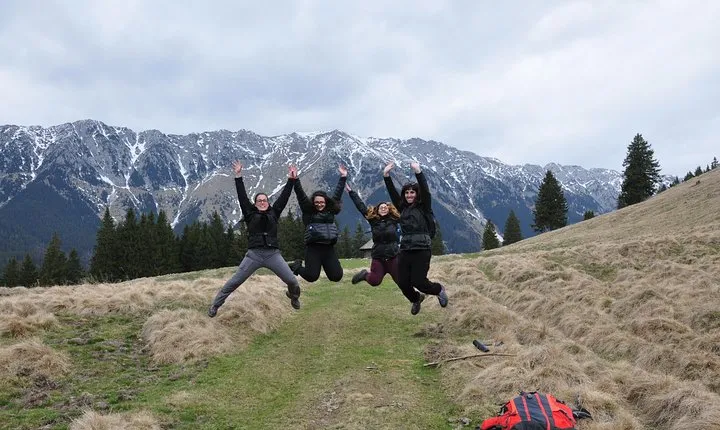Piatra Craiului National Park Private Hiking Tour from Brasov

+12 photos
This private hiking trip is a great opportunity to explore Piatra Craiului National Park in the Carpathian Mountains, an area pretty much untouched by the 21st century. Trek past gorges, forests and pastures where mountain shepherds still work, and see a side of Romania that's hardly changed in generations.
Hike among the spectacular Carpathian Mountains on a guided, private-group tour of Piatra Craiului National Park from Brașov. Follow one of two routes on a 5- to 7-hour hike through alpine meadows, fragrant forests and/or country villages that seem untouched by time. See the cavernous Zarnesti Gorge, and learn about the traditional rural industries of cheese-making and shepherding. Refuel with hearty Romanian fare at either a mountain hut or a local village.
The grade of the tour is ranked T1 or T2 from Swiss Alpine Club (see please <https://de.wikipedia.org/wiki/SAC-Wanderskala>), depending of the route we choose.
**T1 - Hiking.** Path well paved. Terrain flat or slightly sloping, no danger of falling. Doable with sneakers. Orientation without problems, even without a map.
**T2 - Mountain hiking.** Path with continuous route and balanced slopes. Terrain partly steep, danger of falling not excluded. Some surefootedness. Trekking shoes are recommended. Elementary orientation skills.
**Did you know?**
The name of the mountain came from one of the citadels built by the Hungarian Kingdom, as a custom, control and protection point, at the southern border of Transylvania, at the bottom of the mountains, at the end of XIV century. The name of the citadel in German language was Königstein.
The locals called the mountain The Stone (Piatra).
The name of the highest peak (2238 m) is called Piscul Ciobanului or Piscul Baciului - Shepherd's Peak in English language and Hirtenspitze in German language.
A century ago the Carpathians mountains represented the border between Austrian-Hungarian Empire and Valachia, the southern part of Romania. The border divided Piatra Craiului Massif exactly on the highest peak, Piscul Baciului, where was the border pillar no. 201 and a pyramide made from wood (triangulation beacon).
The Piatra Craiului Massif became a natural reserve on March 28, 1938 (Journal of the Council of Ministers No. 645), with an initial surface of only 440 ha. The Council of Ministers made this decision *"due to the unique nature of the massif where there are rare species, such as Dianthus callizonus, Hesperis nivea, Minuartia transilvanica, Leontopodium alpinum, and also for the beauty of the landscape."*
Please select a date
Activity package
to get availability.
Facilities
Free cancellation
mobile
7 hours
Available in English
Important information
* **Dress warmly: Compulsory sturdy and waterproof hiking shoes; warm clothes recommended**
* Route may be changed without notice due to weather conditions
* Not wheelchair accessible
* Not stroller accessible
* Not suitable for pets
* Infants must not sit on laps
* Infant seats unavailable
* Not recommended for people with back problems
* Not recommended for pregnant travelers
* Not recommended for people with heart conditions
* Please bring your own mask; we provide hand sanitizer. We are cleaning vehicles after every tour.
* On departure the guide will hold a signboard for you to recognize: Meeting Point GUARANTEED DEPARTURES DAY TOURS
* Public transportation nearby



